New Zealand experienced one of the world’s largest house price increases during the pandemic, only for prices to then crash back to pre-pandemic levels over subsequent years.
The following chart from Justin Fabo from Antipodean Macro illustrates the enormous boom and bust of New Zealand’s housing market.
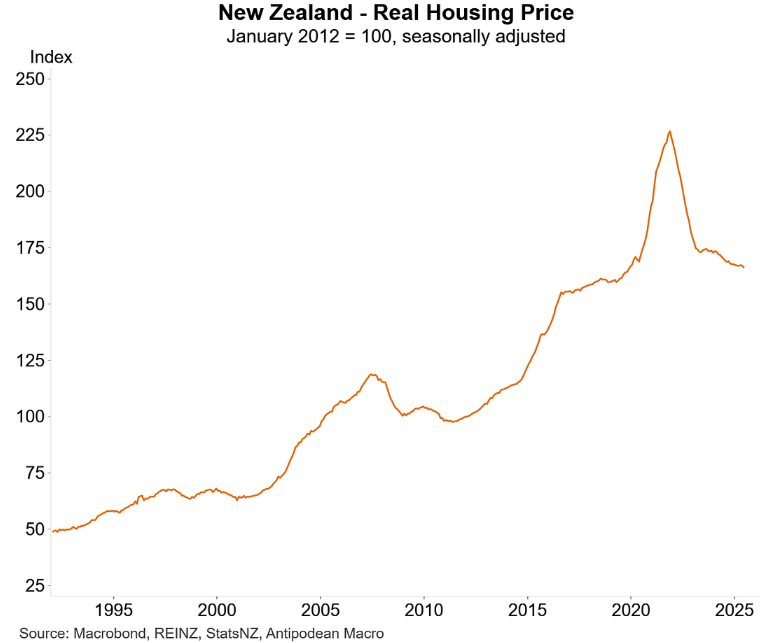
The upside is that housing affordability in New Zealand has improved significantly owing to lower prices and mortgage rates following the Reserve Bank’s monetary easing.
New Zealand’s median house price-to-income ratio has fallen to decade lows:
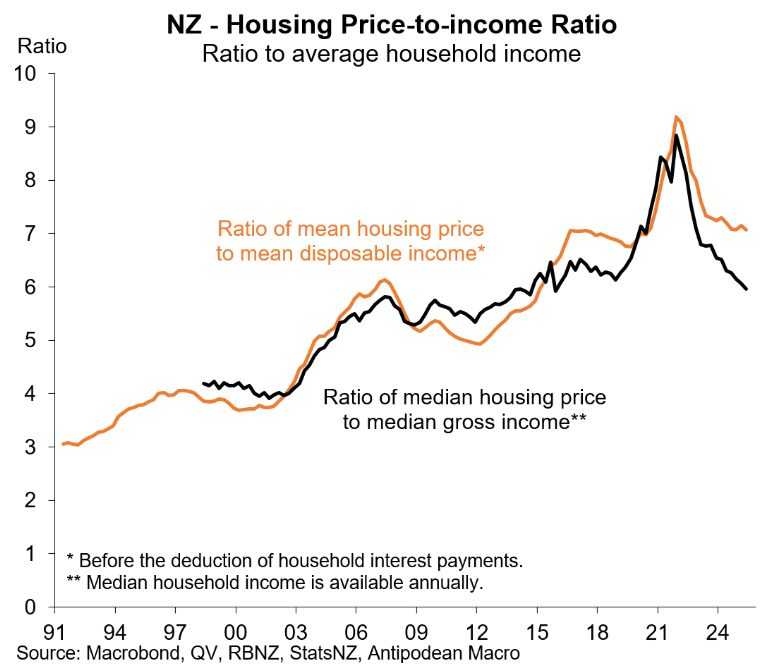
Mortgage repayment affordability has also fallen to cyclical lows:
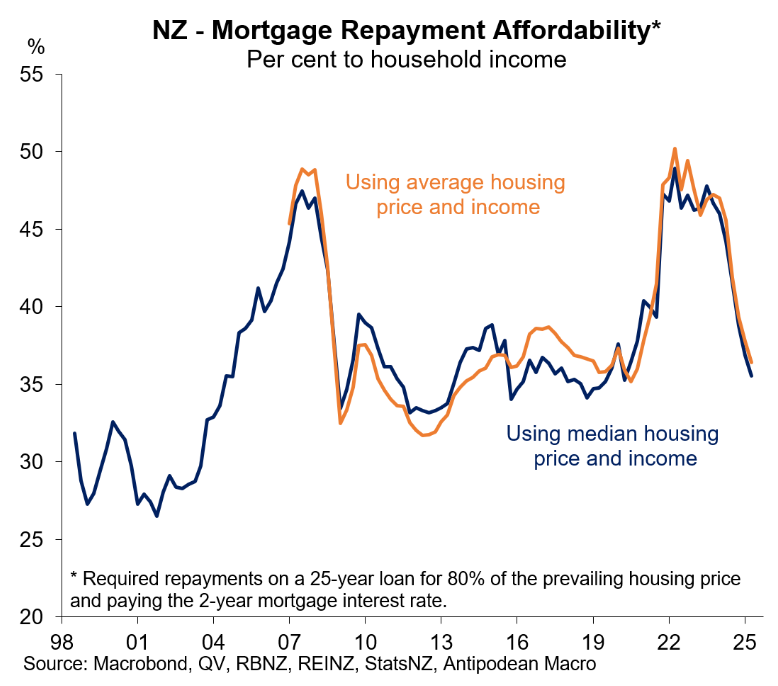
In 2018, the former Labour government in New Zealand introduced a foreign buyer ban, which restricted non-residents from purchasing existing homes, with exceptions for Australian and Singaporean residents.
The National Party, which took office in October 2023, promised that if elected, it would repeal the foreign buyer ban.
Leader Chris Luxon promised that National would allow foreigners to purchase homes valued at more than NZ $2 million as long as they pay a 15% purchase tax.
When National won the election and Luxon became Prime Minister, talk of a possible repeal faded. As part of a coalition government deal, Winston Peters, New Zealand’s deputy prime minister, allegedly pressured National to withdraw the repeal effort.
However, a plan to ease the ban on foreign buyers appears to be back on the table, albeit with a higher threshold.
Winston Peters told the NZ Herald that he will soften his opposition to National and ACT’s hopes of lifting the foreign buyers ban but won’t say what the threshold should be, other than it will be “millions”.
Net overseas migration into New Zealand has also fallen to a 2½-year low and is tracking around half the historical average.
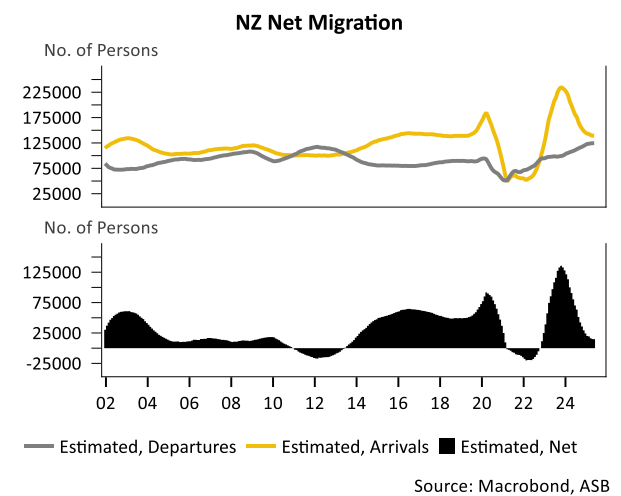
This slump in immigration has helped housing affordability, with home prices and rents declining amid the weaker demand.
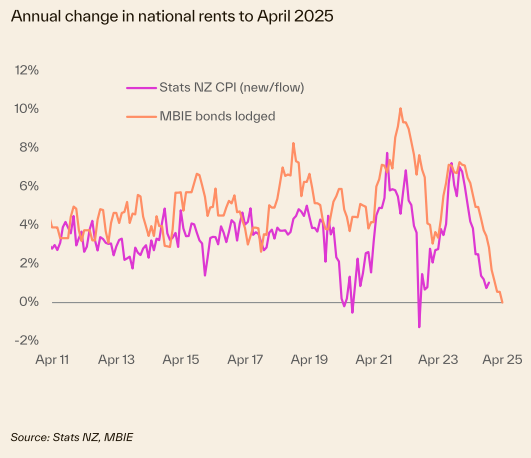
However, the National government has sought to ramp up immigration via three visa pathways.
First, the government announced new ‘Parent Boost’ visa, which will allow migrants to bring parents to New Zealand for up to 10 years.
Second, the government announced a new foreign investor migrant visa, aimed at luring more high-net-worth individuals to the country to stimulate economic growth.
The government has relaxed rules for the visa, including lowering the minimum required funds for the category that focuses on higher-risk investments to NZ$5 million (US$3 million) from NZ$15 million and removing the English language requirement.
New Zealand has already seen a rush of applications for the new visas from the US, mainland China, and Hong Kong, many of whom will purchase property.
Third, the government raised the number of permitted hours that international students can work during the academic term from 20 to 25 hours in a week in a bid to boost enrolments.
Clearly, the government is intent on reigniting New Zealand’s housing market.

